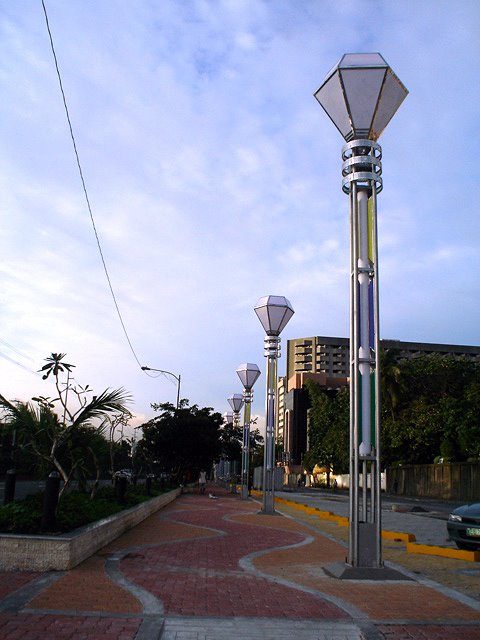beyond borloloy
Photo of new streetlamps in Pasay City, by Carlos Celdran
So the MMDA is looking for "architects, landscape artists and nonprofessionals" to "turn Metro Manila’s drab landscape from grey to green" (google cached article here -as I failed to catch the release on INQ7) as part of it's P100M facelift of the Metro. ("Non-professionals? Does he mean gardeners? or doodle-artists?)
“They must give their ideas soon … they should submit their proposals hopefully by the first week of December. The Metro is a concrete jungle and we need this to soften up the look of Metro Manila,” said Nacianceno in a phone interview.
The proposal, he added, should be practical, affordable and sustainable.
“Of course we are looking at functionality. The plan should not be too expensive maintenance-wise but still colorful in terms of the kinds of plants they intend to use,” he said."
Good intentions i guess, but the whole plan smacks of ornamentation. My former boss, in response to a florida councilman's questions about the intent of their waterfront plan, once said "we are planning a city, not just decorating it." (And she should know as she, with her late husband, led the groundbreaking urban plans for, among others, Boston's Faneuil Hall, Chicago's Navy Pier, San Francisco's Ghiradelli Square, Baltimore's Harborplace, and New York's South Street Seaport.)
It would be better if they spent a million or two coming up with an actual urban plan for the Metropolis that looked at mobility and livability issues -along with city image. Try for instance something like Austin TX's Great Streets Masterplan where the design guidelines were anchored on the following principles:
- Sense of History
- Unique Character
- Authenticity
- Safety
- Diversity
- Humane Character
- Density
- Economic Vitality
- Civic Art
If the landscape or streetscape plans are not grounded in deeper principles, the deciding factors would be the MMDA's design aesthetics. (More pink?)









